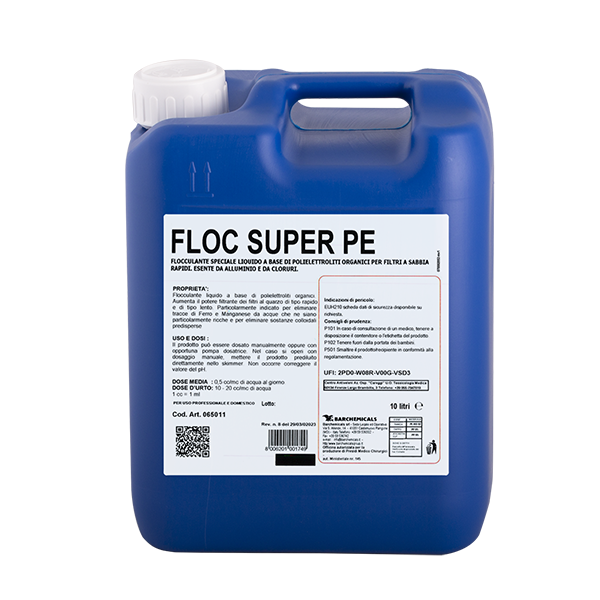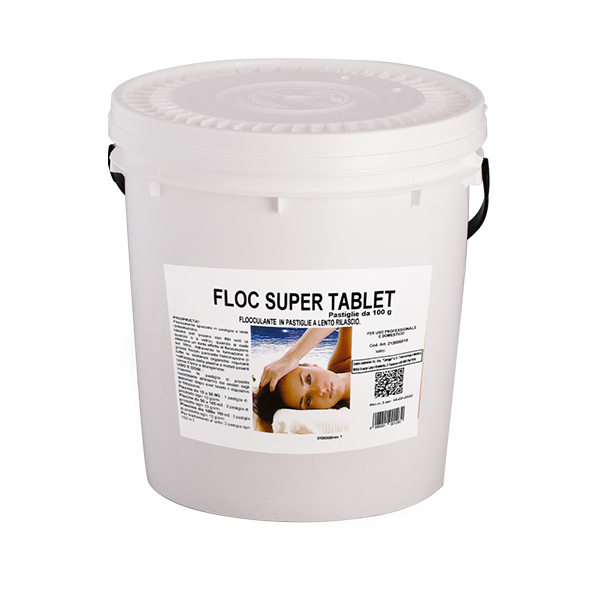Often the use of disinfecting products is not enough to produce transparent, crystalline water. The use of Flocculants, encourages and makes the filtering process easier, making very small particles filterable, which would normally not be. This way, the use of the Flocculant helps to make the water crystalline, transparent and shiny.
The water in the swimming pool regularly loses its transparency and appears turbid as a result of:
- The presence of algae and bacteria.
- Precipitation of Calcium and Magnesium salts.
- Dust carried through the air or by bathers.
- Oxidisation of Iron and Manganese salts.
- Organic and colloidal substances
In most of the cases expressed, the particles inserted in the water are extremely small or in solution (colloidal) and do not become sufficiently large to be treated by the filtering system. The Flocculants improve the capacity of the particles to join together and form larger, more filterable groups. The colloids normally tend to reject each other due to the electrostatic loads found on their surfaces. The Flocculants neutralise these loads allowing for the formation of groups that can be treated by the filter.
The Flocculants can be split into two categories:
- ORGANIC – these are made up of polymeric molecules that act as coagulants. Ideal for rapid filters and slow filters
- INORGANIC – these are made up of transition metal hydrosoluble Salts. Perfect for slow filters.
HOW THE FLOCCULANT IS USED
By injecting it into the recirculation line
Using a feed pump, inject 0.5ml of Flocculant for each cubic meter of the recirculation flow, prior to the filter entrance or in the compensation pool.
In the Skimmer
Put the amount of Flocculant in tablet form needed directly into the skimmer (from 1 to 3 tablets every 100 cubic metres) or liquid (0.5l/1ml /m3).
Flocculants are not used for diatom, sock or cartridge filters, while they are suitable for sand and glass filters.



